- Joined
- Jul 27, 2009
- Messages
- 4,097
Is a GIA “Good” cut actually good?
And if it is good, who is it good for – the consumer or the manufacturer?
I love GIA, don’t get me wrong. But calling the diamond featured here a “Good Cut” is not helpful to the consumer. But it does illustrate just how broad and forgiving the GIA cut grade system is.
Just how lenient is the GIA cut grade system you ask? The diamond represented by the diagram below earns a GIA cut grade of GOOD. Granted, “good” is GIA’s third grade behind Excellent and Very Good. But you can forgive the inexperienced diamond consumer for thinking this diamond is of desirable cut quality, considering GIA’s well deserved reputation for expertise and accurate grading. But in this particular case “good” is a euphemism for “third rate”!
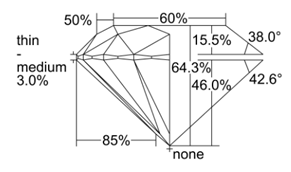
The very high crown and pavilion angles in particular will have bad (not good) impacts on light performance. Not only is each excessive on its own, but crown and pavilion angles work together an inverse relationship. That is, a high crown angle must be complimented by a low pavilion in order for internal reflections to result in the best light performance. And a high pavilion angle must be complimented by a low crown angle to achieve that result. When both numbers are high, the result is what is known in the trade as a “steep/deep”, and the diamond represented by this diagram is an extreme example of one. Not good!
A computer generated ASET for a diamond with these specs (left) illustrates the problems with this proportioning. Not only does the stone suffer from excessive light leakage (white), but the light it is returning is dominated by less bright low angle light (green). This will result in reduced brightness overall. A well-cut diamond (right) will have the opposite ASET signature; much more red, significantly less green, and a lot less white.
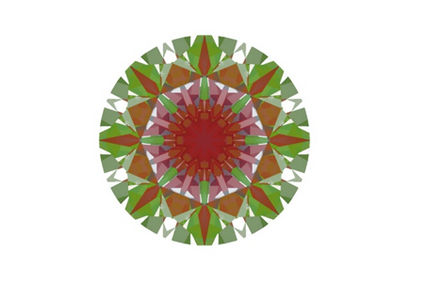
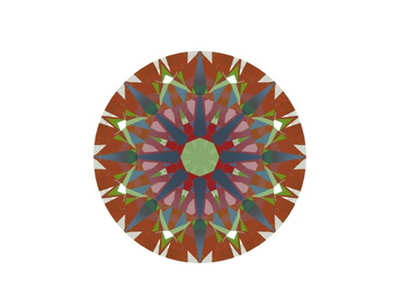
Images generate with DiamCalc software by Octonus
A broad and forgiving cut grade system benefits manufacturers because they can take liberties with cutting to get higher carat yield that can be sold for more money, while still getting a cut grade on a GIA report that looks palatable to the average consumer. But a diamond that suffers from significant deficits in light performance is certainly not “good” for the consumer.
Even the GIA Excellent grade includes some diamonds with light performance deficits. So while it establishes a decent baseline for consideration, more information needs to be ascertained in order to verify that the cut quality is really excellent. But the GIA cut grades of very good and good are really stretching the definition of those labels!
And if it is good, who is it good for – the consumer or the manufacturer?
I love GIA, don’t get me wrong. But calling the diamond featured here a “Good Cut” is not helpful to the consumer. But it does illustrate just how broad and forgiving the GIA cut grade system is.
Just how lenient is the GIA cut grade system you ask? The diamond represented by the diagram below earns a GIA cut grade of GOOD. Granted, “good” is GIA’s third grade behind Excellent and Very Good. But you can forgive the inexperienced diamond consumer for thinking this diamond is of desirable cut quality, considering GIA’s well deserved reputation for expertise and accurate grading. But in this particular case “good” is a euphemism for “third rate”!

The very high crown and pavilion angles in particular will have bad (not good) impacts on light performance. Not only is each excessive on its own, but crown and pavilion angles work together an inverse relationship. That is, a high crown angle must be complimented by a low pavilion in order for internal reflections to result in the best light performance. And a high pavilion angle must be complimented by a low crown angle to achieve that result. When both numbers are high, the result is what is known in the trade as a “steep/deep”, and the diamond represented by this diagram is an extreme example of one. Not good!
A computer generated ASET for a diamond with these specs (left) illustrates the problems with this proportioning. Not only does the stone suffer from excessive light leakage (white), but the light it is returning is dominated by less bright low angle light (green). This will result in reduced brightness overall. A well-cut diamond (right) will have the opposite ASET signature; much more red, significantly less green, and a lot less white.


Images generate with DiamCalc software by Octonus
A broad and forgiving cut grade system benefits manufacturers because they can take liberties with cutting to get higher carat yield that can be sold for more money, while still getting a cut grade on a GIA report that looks palatable to the average consumer. But a diamond that suffers from significant deficits in light performance is certainly not “good” for the consumer.
Even the GIA Excellent grade includes some diamonds with light performance deficits. So while it establishes a decent baseline for consideration, more information needs to be ascertained in order to verify that the cut quality is really excellent. But the GIA cut grades of very good and good are really stretching the definition of those labels!
Attachments
Last edited:

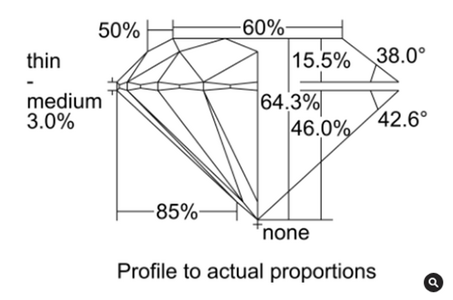




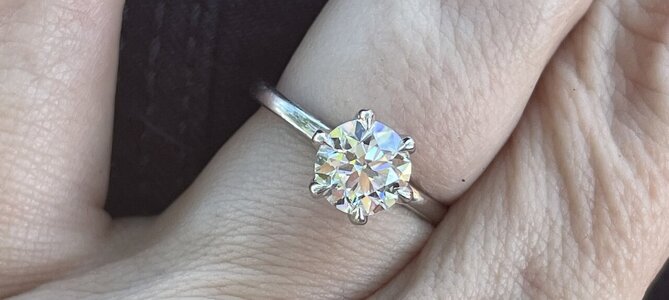

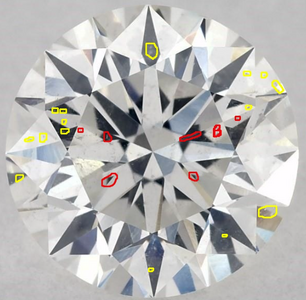

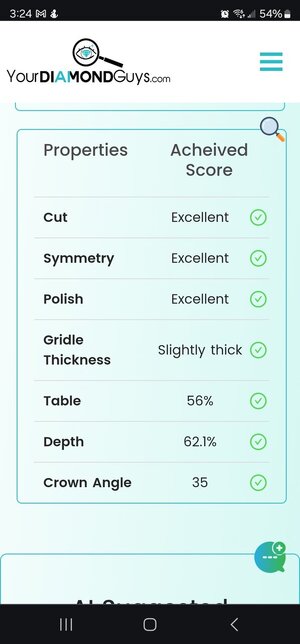







300x240.png)